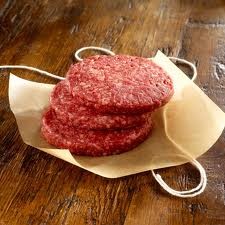 Flat demand remains the main concern for many US foodservice operators at this time, market analysts reported this week.
Flat demand remains the main concern for many US foodservice operators at this time, market analysts reported this week.
As was described in Beef Central’s earlier report on McDonald’s recent financial performance, cold and wintry weather across much of North America has negatively impacted on US food service sales, with consumers reluctant to venture away from their centrally-heated homes to eat out.
While the US food service sector dollar sales appear to have risen recently, higher sales do not necessarily mean higher volume, an analyst pointed out.
Food cost inflation in the US has been moving higher as restaurants raise prices in the past few months, which is contributing to higher dollar sales. However, at the same time, foot traffic appears to be struggling, with a majority of respondents to a recent survey from the fast food segment indicating that traffic is lower today than it was a year ago.
Poor foot traffic at food service, especially at fast food restaurants like McDonald’s and Burger King, likely explains the relatively lacklustre demand that has been seen so far this year for grinding beef, Steiner Consulting says in its weekly imported beef report.
“US domestic lean grinding beef prices have increased sharply, but we think this largely reflects retail demand for fresh ground beef. Most retailers do not use imported grinding beef in their formulations,” Steiner said.
“Processors that run least-cost formulations certainly now find imported beef to be very competitive. Their main concern, however, is sales and for the most part they have been quite cautious in getting their needs covered forward.”
However US cow slaughter numbers remain limited, down about 7pc last week compared with the same period a year ago. US steer and heifer slaughter is also expected to be limited as US packers struggle with poor margins and slumping beef prices (see references below).
“We suspect that this should be supportive of higher imports in the US market,” the Steiner report said. “Demand in other (alternative export) markets remains a big wild-card, but Australian January shipments rose about 8pc compared to a year ago. We expect February and March shipments will be somewhere between 2012 and 2013 levels.”
The shift in the value of the US dollar versus the Australian currency certainly had been supportive of higher US beef imports, dropping about 10pc since late October, Steiner said.
US beef prices slumping
Going sharply against earlier trends, the US beef cut-out has now given up more than half of the big gains it made since the beginning of the year.
Market participants remain jittery about the prospect of cattle prices going into the spring, Steiner said.
Slumping US wholesale beef values and still relatively high cattle prices certainly are weighing on US packer margins at this point.
“The question is: how long do packers continue to chase cattle given the dramatic demand reaction in the last week or two? Further erosion in cutout values will most certainly increase the pressure on US packers to limit throughput, Steiner said.
“What appears clear from the price action is that packers will continue to play defence, buffeted by near record high cattle prices and eroding seasonal retail demand.”
In the last two weeks, the USDA Choice beef cutout has dropped by about US$20/cwt, with more than half of the decline is due to a drop in the value of the chuck primal.
“As far as we know, there are not a lot of chuck steaks being served at your local steakhouse. Rather, much of the chuck primal either is sold in the retail meat case as ground beef, or it goes to export markets. US export sales so far appear to be holding up well, but there is a bit of lag in the export data as shipments in mid-January likely were booked a few weeks earlier.”
“It will be interesting to see how weekly beef exports to markets like Korea, Japan, Hong Kong and Taiwan, hold up in February and early March.”
“Packer margins have eroded quickly, and it remains to be seen how quickly they can adjust as well and when gravity starts pressuring live cattle prices,” the Steiner report said.
Imported beef still at a discount to domestic in the US
The cold, snowy opening to 2014 reducing food service customer traffic, and retail buyers becoming more reluctant to buy imported manufacturing beef due to requirements for mandatory Country of Origin Labelling have contributed to imported 90CL cow beef trading cheaper than domestically produced 90CL beef so far this year.
last week, the imported 90CL cow beef indicator was at US200.5c/lb CIF, 1c higher than last week (A464.4c/kg FAS, up 3.4c), while the domestic 90CL indicator was at US233.5c/lb. This grinding product price is also well above the Choice cutout of US208¢/lb, which was as high as US 240c just three weeks ago.



HAVE YOUR SAY